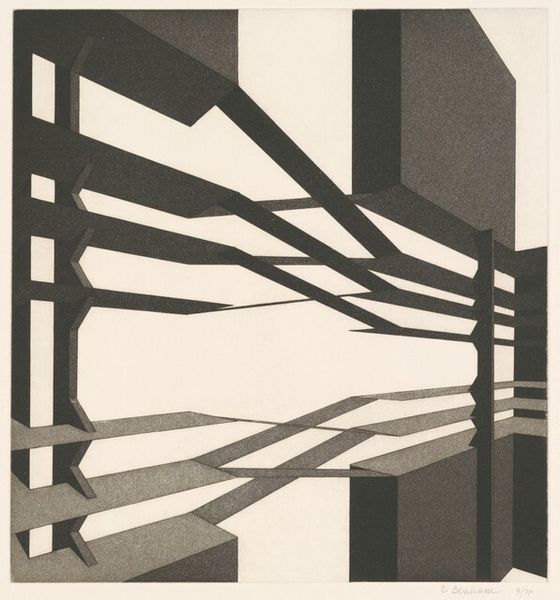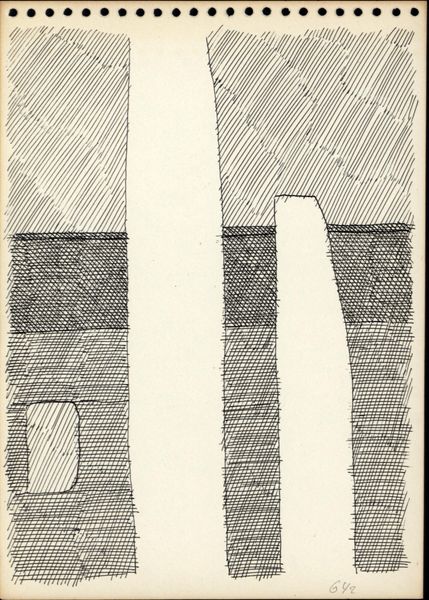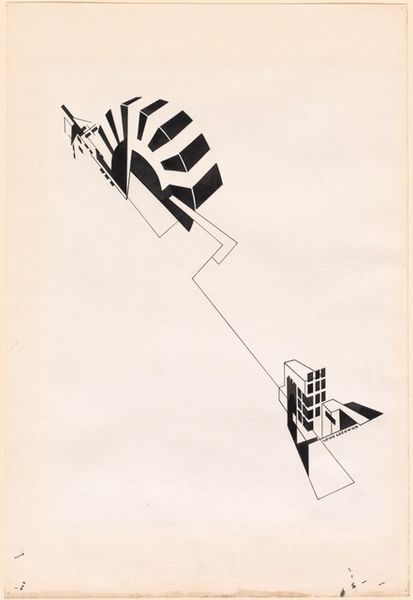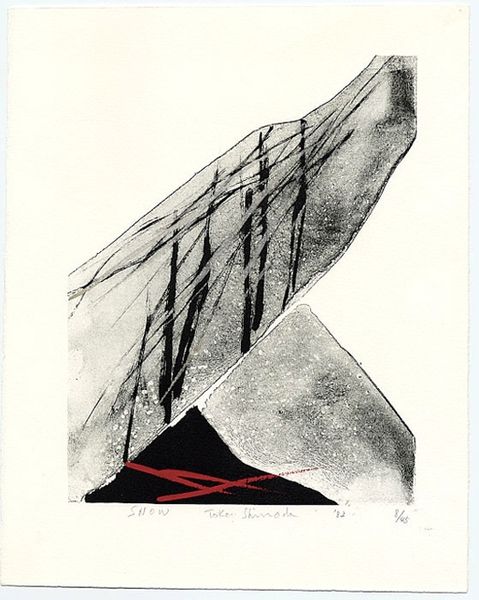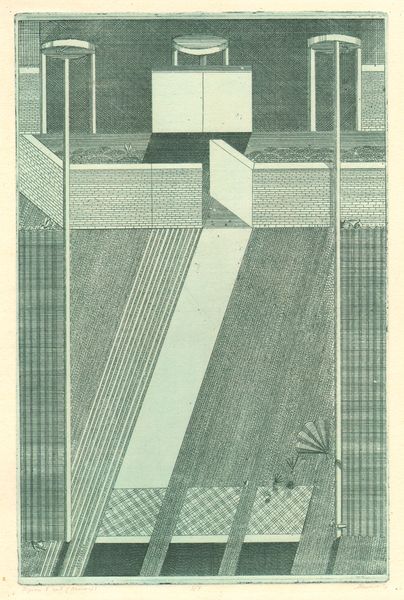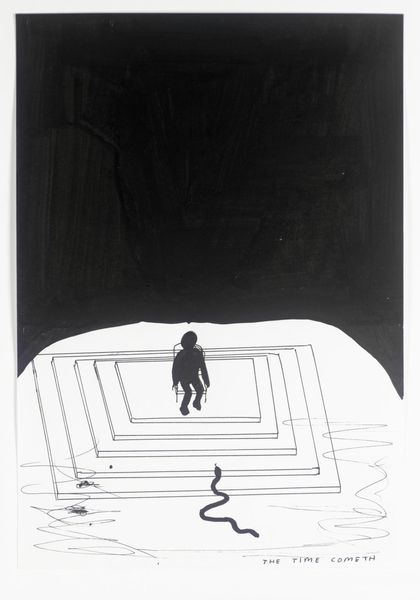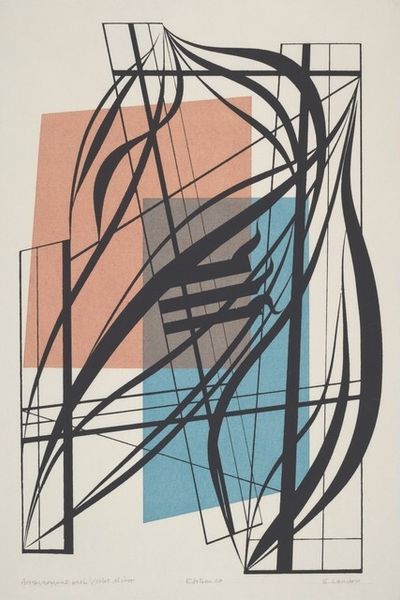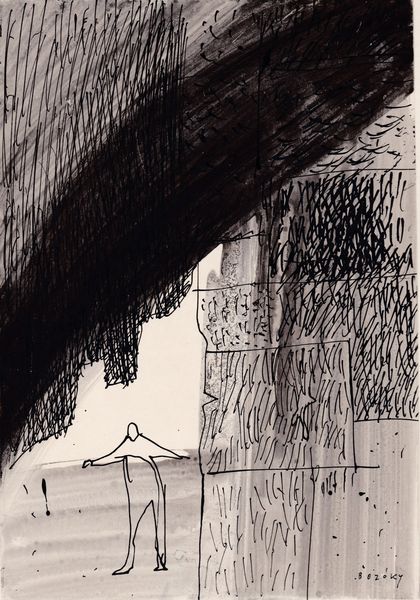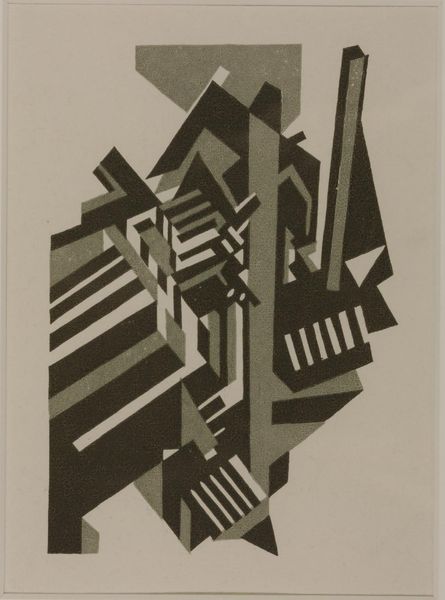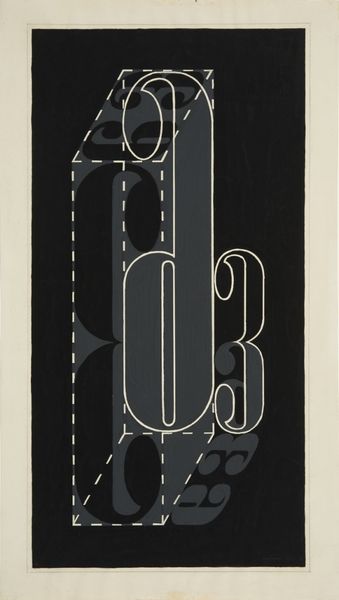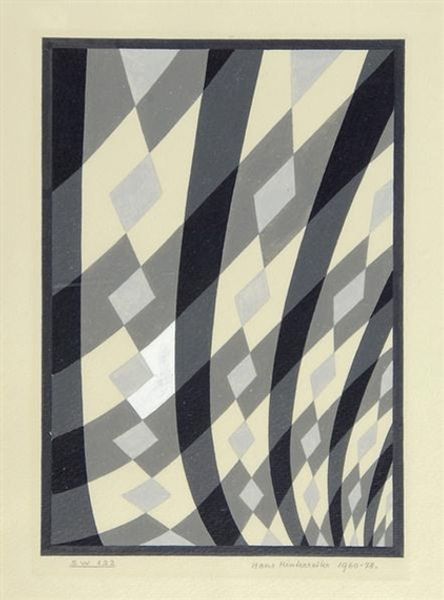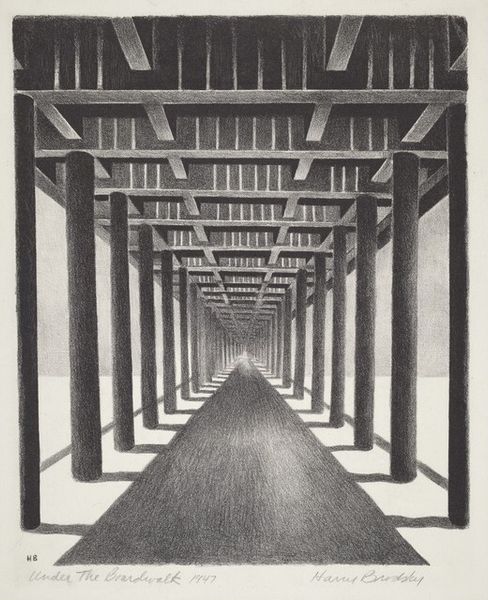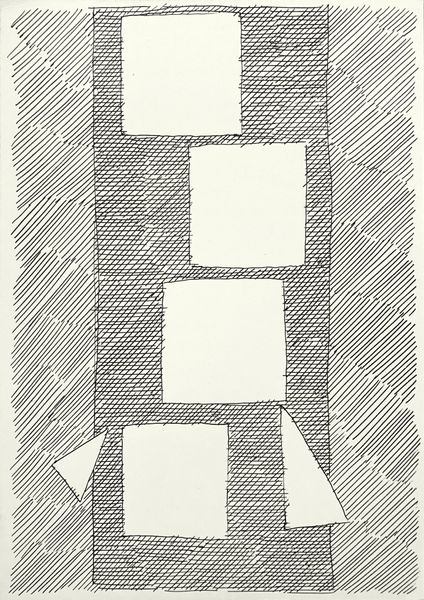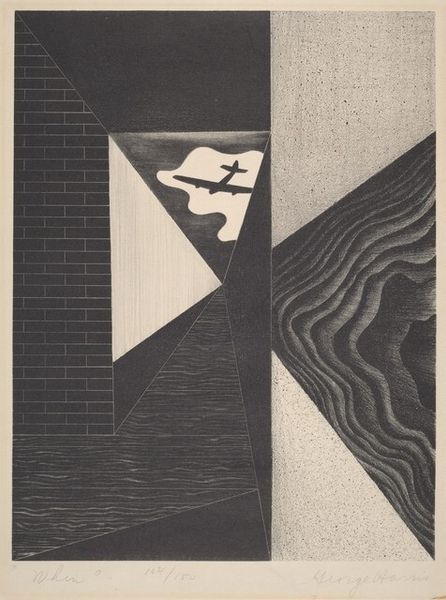
# print
#
geometric
#
abstraction
#
line
#
cityscape
#
modernism
Dimensions: Image: 454 x 338 mm Sheet: 610 x 490 mm
Copyright: National Gallery of Art: CC0 1.0
Curator: I find this cityscape quite unsettling, almost like a stage set after everyone's left. The heavy shadows really emphasize a kind of… emptiness. Editor: We're looking at James DeWoody’s “55th Street at Madison Avenue,” a print from 1987. I'm struck by its austere, almost diagrammatic rendering. DeWoody reduces urban space to basic forms—blocks, lines, curves. We should note the print medium, indicating accessibility in both creation and distribution. Curator: Definitely. It almost feels mass-produced. And you're right about the shapes, they seem cold and deliberate. All those grayscale tones—what does it tell us about his process? Is he interested in the industrial reproduction inherent in printmaking, the sort of factory-like efficiency involved? Editor: Precisely! DeWoody's formal simplification reflects a wider shift. The flattening and geometry distance it from photorealism. It highlights the constructed, almost artificial nature of our lived urban environments. Where do people exist in this landscape? I see this echoing critiques from that period of consumerism and late-stage capitalism. Curator: Good point. Look at the lack of texture. Everything’s been reduced to this almost ghostly shell. What social critique do you see emerging, though? Editor: Think about who typically occupies spaces like 55th and Madison: power brokers, elites. This depiction, almost scrubbed clean, reflects a certain critique of unchecked corporate power dominating public spaces, right? Who is invited into these pristine geometric environments? Who is denied entry? This artistic intervention demands the need to examine and re-evaluate such socio-economic dimensions of the cityscape. Curator: Yes, I can certainly understand your emphasis on it evoking power structures and the absence of people becomes amplified in this interpretation. In any case, "55th Street at Madison Avenue" uses abstraction to great effect and highlights these formal constraints which lead towards various critical and insightful angles. Editor: Exactly. Hopefully this nuanced appreciation encourages fresh approaches to engage more expansively beyond our own perspectives.
Comments
No comments
Be the first to comment and join the conversation on the ultimate creative platform.
